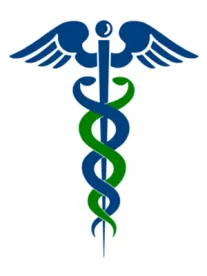Before entering into a change-of-ownership transaction, a joint venture, or similar transactions involving health care facilities, the parties frequently perform thorough due diligence on health care regulatory matters. Parties to such transactions should also recognize the importance of a due diligence review of labor relations issues. A thorough and coordinated review of such issues can help limit the risk of post-transaction labor surprises that can have significant financial and operational implications for health care entities—even those currently without any unionized employees.
Looking Beneath the Surface to Anticipate Potential Post-Transaction Labor Issues in Nonunion Workforces
The time before and during a change of ownership or corporate structure can be a period of great uncertainty for employees of a health care entity. Employees may worry not only about whether their compensation, benefits, and work environment will change but also about whether they will still have a job once the change of ownership is completed. This period of uncertainty can be ripe for union organizing activities in a nonunion workforce, or cause interest in an expansion of union representation where part of a workforce is already represented. There have been reports of employees organizing shortly after completed transactions involving health care entities. Further, the ruling by the National Labor Relations Board (“NLRB”) in Specialty Healthcare[1] allowing union organization in “micro units” in health care institutions (other than acute care hospitals) will make organizing easier for unions.
To begin with, the due diligence effort must address whether there are any ongoing attempts to organize the workforce, such as NLRB representation proceedings, direct demands for recognition from unions, or evidence of organizing or card-signing campaigns. The review should include an overall audit for vulnerabilities to union organizing efforts, analyze whether the institution is paying competitive wages and benefits, and examine records of employee complaints about workplace issues. In addition, the review should confirm proper compliance with the many laws governing employment (such as wage and hour laws, the Family Medical Leave Act, laws governing discrimination and harassment, and similar laws on a federal, state and, increasingly, local level) because poor compliance with those laws could be used by unions as a basis for organizing activities.
What to Look for When the Workforce Is Already Organized
Where the workforce is represented either in whole or in part by a union, the collective bargaining agreements (“CBAs”) must be reviewed. The CBAs will disclose not just current wages and benefits but also scheduled increases in wages and employer contributions to pension and health care funds. A due diligence review should identify the expiration date of CBAs, which will trigger a new round of bargaining.
When a CBA indicates that participation in multiemployer pension or health funds is required, the review should be expanded to include the financial health of the plans and the benefits provided. In particular, multiemployer pension plans should be critically examined under the Pension Protection Act and the Multiemployer Pension Reform Act. Severely underfunded plans will likely have adopted rehabilitation plans that require hefty increases in employer contributions each year. They also carry the potential for massive withdrawal liability under the Employee Retirement Income Security Act of 1974 (“ERISA”) if the employer ceases contributions to the fund or the fund suffers a “mass withdrawal” of employers. Parties also need to examine whether a withdrawal has already occurred and withdrawal liability incurred, or whether the transaction itself will trigger withdrawal liability. Several recent federal court decisions have imposed withdrawal liabilities on successor employers in asset purchase agreements.[2]
Employee health plans, particularly multiemployer health plans, can have potential hidden liabilities for an acquiring or partnering health care entity. These plans need to be carefully evaluated for compliance with the many mandates of the Affordable Care Act. Past increases in employer contributions or costs should be reviewed as part of projecting future health coverage costs for the entity.
The CBAs should be reviewed by labor counsel to determine the applicability of any successorship language that could require the acquiring entity to recognize the union and honor existing CBAs, or purport to require that the union be recognized by, and the CBA applied to, any new or acquired facilities. It is also important to identify “neutrality” clauses, which require that the employer not oppose any union organizing efforts in unrepresented job classes or at other locations owned or operated by the employer.
The interactions and working relationship between the entity and the unions representing the employees needs to be carefully reviewed. A review of past and pending unfair labor practice charges, grievances, and arbitration proceedings should be made to evaluate risk of adverse decisions. Pending grievances and arbitrations have the potential for new interpretations of existing CBA clauses and practices that may carry with them increases in operating costs. Further, liability for prior unfair labor practices can be imposed on successor employers.
Labor relations issues and terms of CBAs can have long-standing effects on future operations and significant financial implications both in the present and well into the future. An investment in labor relations diligence before entering into a transaction may prevent costly workforce surprises after the transaction is completed.
[1] 357 NLRB 934 (2011).
[2] See, e.g. Resilient Floor Covering Trust Fund v. Michael’s Floor Covering, Inc., Case No. 12-17675 (9th Cir. Sept. 11, 2015).




 />i
/>i

